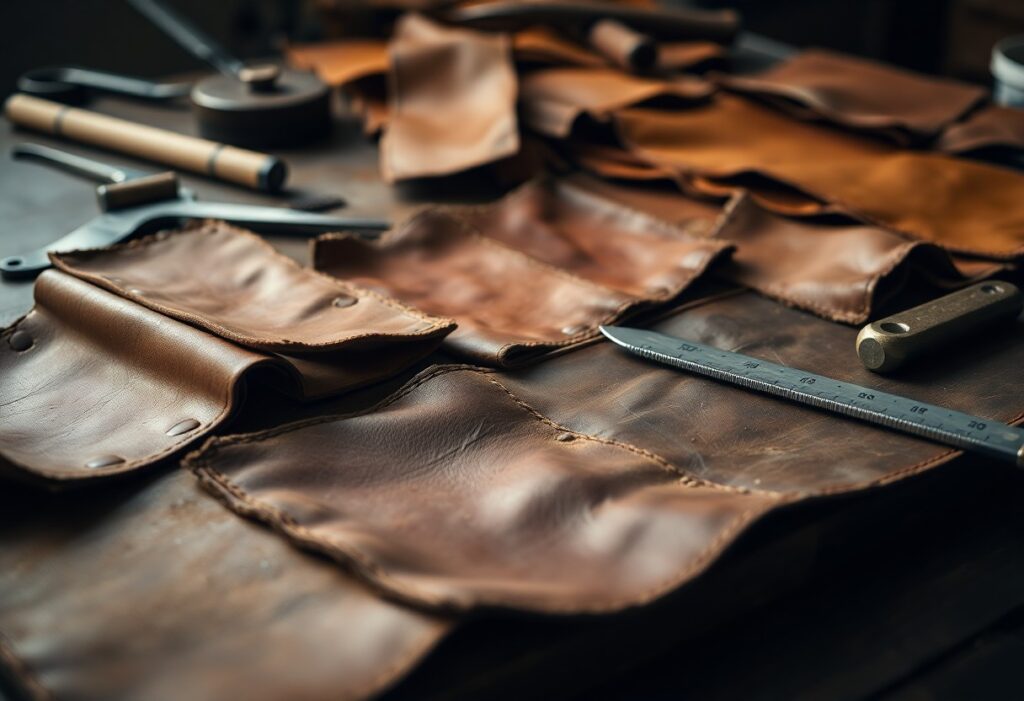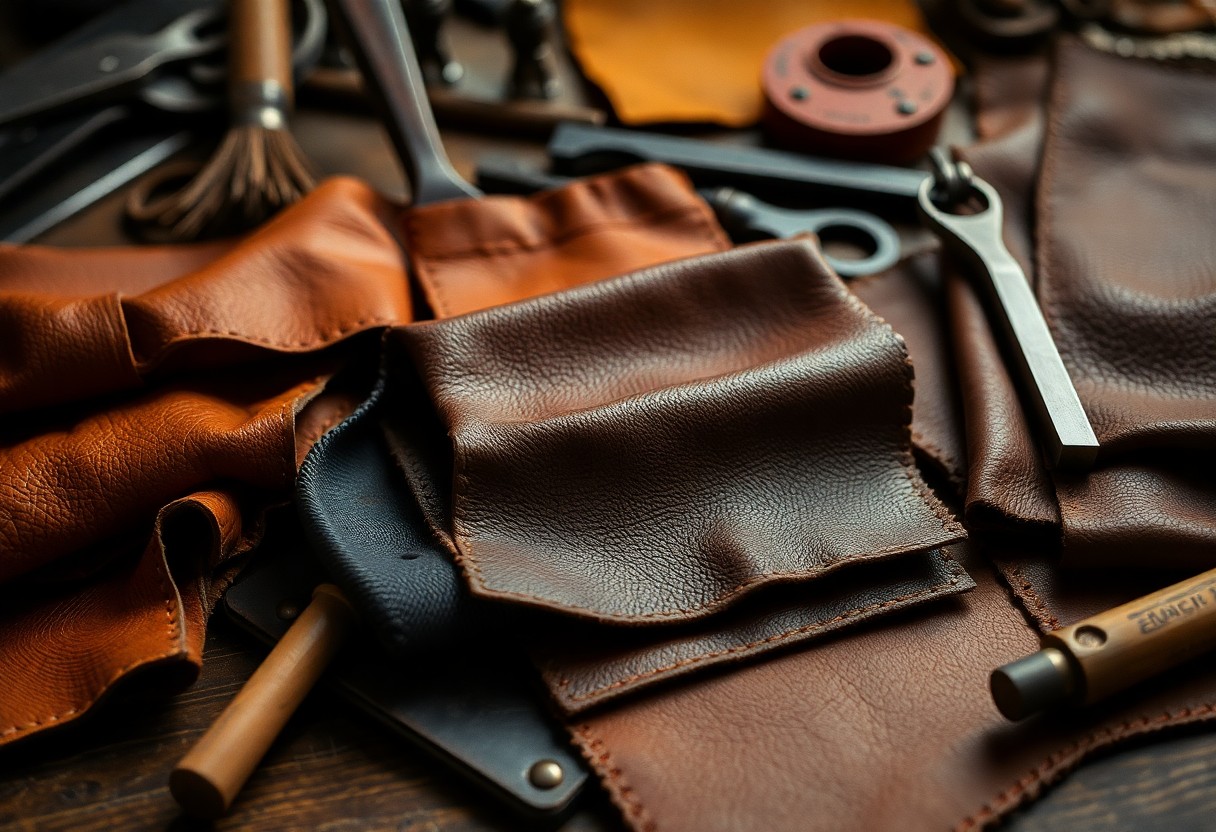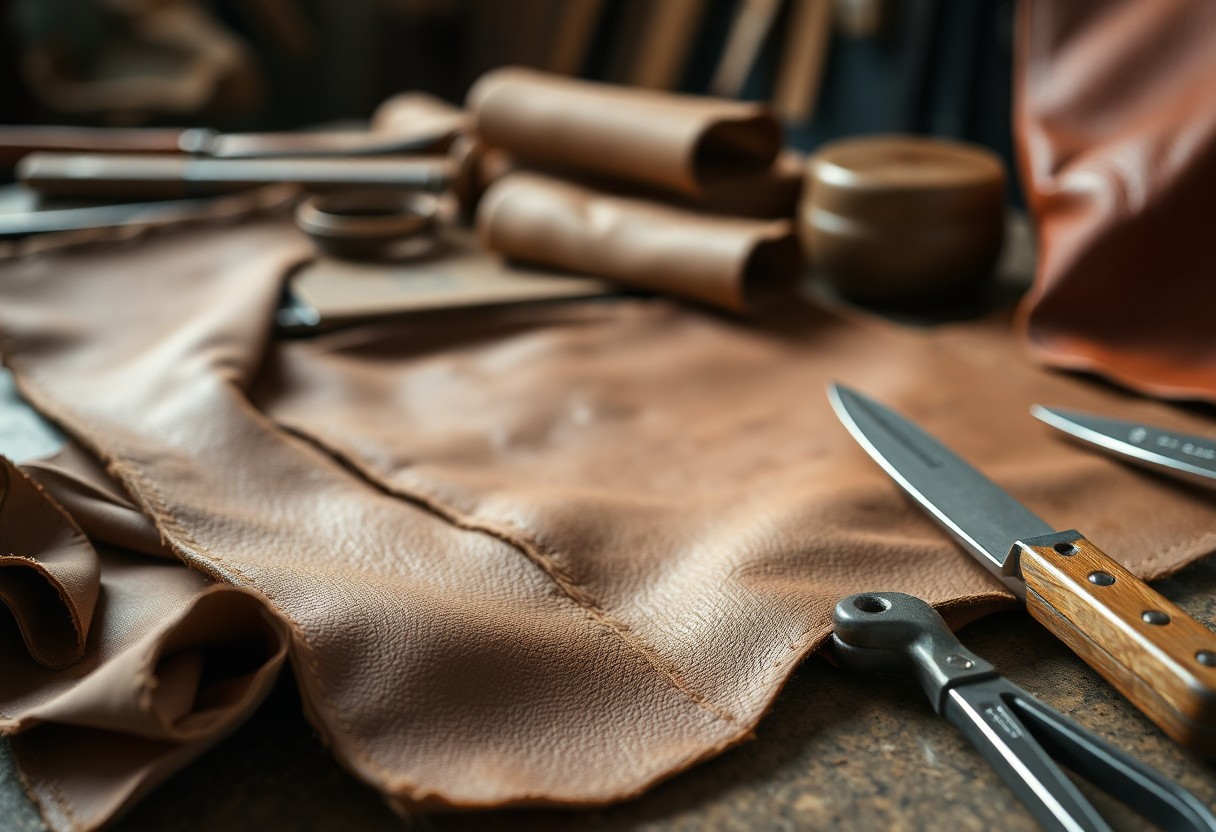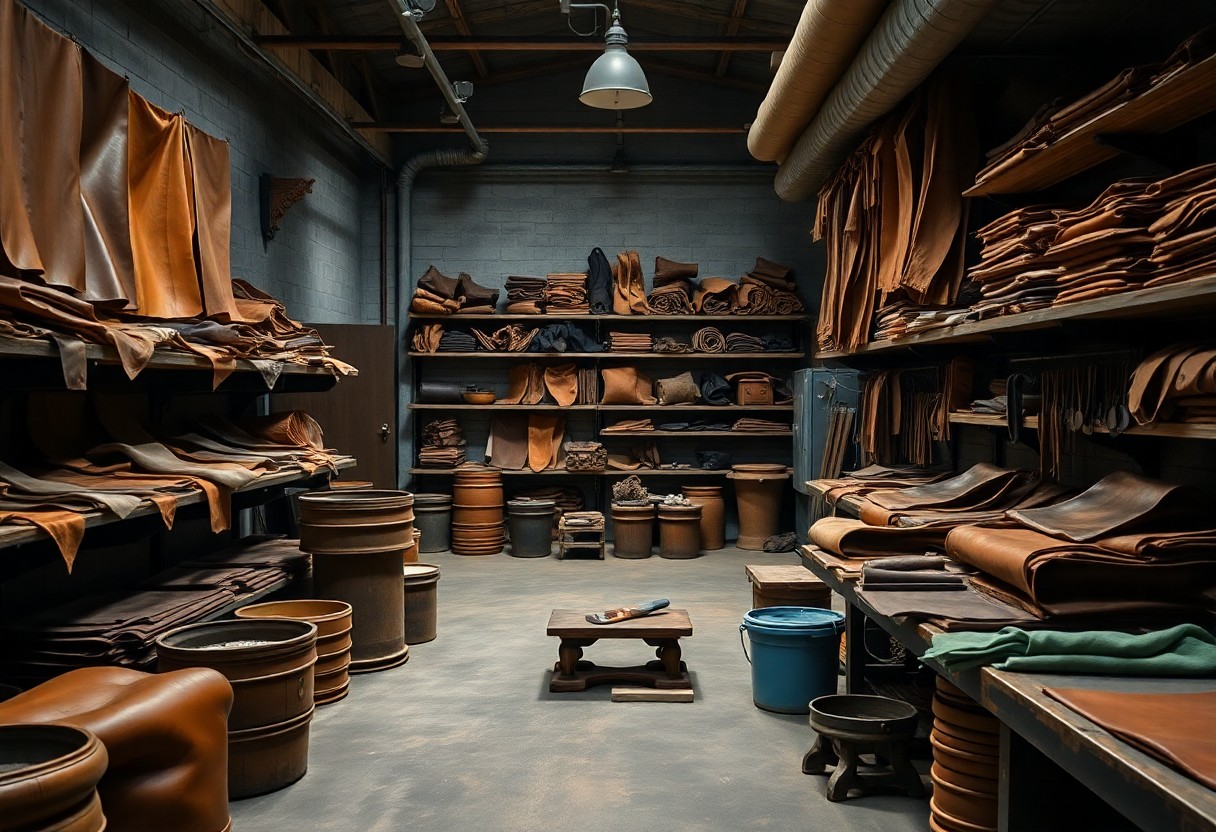
The journey of leather tanning has evolved remarkably over the years, resulting in complex methods that greatly influence the quality and functionality of leather products. Different tanning techniques create distinct characteristics in leather, affecting its durability, water resistance, texture, and color retention. The tanning journey begins with raw hides and progresses through critical stages, including chrome tanning, vegetable tanning, and chrome-free methods. Each technique imparts unique properties to the leather, significantly impacting its usability and maintenance. By gaining a comprehensive understanding of these processes, you can make knowledgeable choices regarding leather quality while considering the environmental implications of each method, as some are notably more sustainable than others.
Discover the Diverse Leather Tanning Techniques and Their Benefits
In leather production, a range of tanning methods is employed to convert raw hides into usable leather. The primary techniques include chrome tanning, vegetable tanning, and chrome-free tanning. This detailed guide aims to elucidate the subtleties of each method, empowering you to select the one that aligns best with your leather requirements and preferences.
| Method | Characteristics |
| Chrome Tanning | Fast, water-resistant, accounts for 85% of global production |
| Vegetable Tanning | Natural, eco-friendly, represents 10% of production |
| Chrome-free Tanning | Environmentally friendly, comprises 5% of production |
| Combination Tanning | Integrates multiple methods for unique properties |
| Aldehyde Tanning | Specialized method for specific applications |
Explore the Intricate Process of Chrome Tanning
The chrome tanning technique utilizes chromium (III) salts to produce leather that is not only soft and flexible but also highly sought after in various applications. This process results in leather that excels in water resistance and easily absorbs dyes, making it a preferred choice in the market. Remarkably efficient, chrome tanning typically takes just 24-48 hours to complete, making it ideal for large-scale production needs.
Uncover the Timeless Craft of Vegetable Tanning
As one of the oldest methods, vegetable tanning relies on natural tannins derived from tree bark and leaves. This traditional technique is celebrated for producing leather that ages gracefully, developing a rich patina over time while being biodegradable. Various sources of natural tannins, including oak bark, chestnut, and mimosa extracts, contribute to the leather’s unique characteristics. Expect this intricate process to span approximately 4-6 weeks, yielding leather that is generally firmer and more structured compared to its chrome-tanned counterparts.

In-Depth Overview of the Leather Tanning Procedure
The transformation of raw hides into high-quality leather is a systematic and meticulous process. Here’s a comprehensive examination of each essential step and its significance in achieving the desired leather quality.
Critical Pre-tanning Steps to Ensure Leather Quality
To secure optimal leather quality, raw hides must undergo a series of meticulous preparation steps. This initial phase involves soaking the hides in clean water for 24-48 hours to remove salt and impurities, followed by a liming process that effectively eliminates hair and fats. Maintaining exact pH control during this stage is crucial to prevent any potential damage to the hides, ensuring they are ready for the tanning process.
Key Phases in the Main Tanning Process
The pretanning phase includes deliming and pickling to prepare the hides for the primary tanning agents. The most common method, chrome tanning, employs chromium sulfate and can yield leather in as little as 24 hours. On the other hand, vegetable tanning relies on natural tannins, extending the process to around 20-60 days, allowing for a more thorough transformation.
Temperature control is another vital aspect of the tanning process. Chrome tanning generally occurs at temperatures between 35-40°C, while vegetable tanning is performed at cooler temperatures of 20-25°C. Consistently monitoring pH levels is essential to prevent leather damage and to facilitate optimal absorption of tanning agents.
Advanced Leather Treatment Techniques for Superior Quality
Numerous techniques exist to improve the properties of your leather. From surface finishing to deep penetration treatments, each method serves a specific purpose. By utilizing the appropriate treatments, you can extend your leather’s lifespan by up to 50% while significantly enhancing its resistance to water, heat, and wear.
Examining Various Surface Treatments for Leather
Surface treatments applied to leather can encompass waxing, buffing, and protective coatings. These methods can boost water resistance by up to 70%, allowing you to choose between a glossy or matte finish based on your aesthetic preference. Furthermore, surface treatments play a crucial role in safeguarding leather against UV damage and everyday wear.
The Impact of Dyeing Processes on Leather Quality and Appearance
Your leather can absorb various types of dyes at different depths. Aniline dyeing, for instance, penetrates deeply into the leather, providing a uniform color throughout, while surface dyeing permits more controlled color application. The dyeing method you select directly affects both the visual appeal and durability of the leather.
Moreover, the dyeing technique you choose significantly affects the leather's final characteristics. Drum dyeing can achieve up to 95% color penetration, while spray dyeing allows for enhanced precision in color control. It’s noteworthy that natural dyes are eco-friendlier but may fade approximately 20% faster than their synthetic counterparts.

Identifying Key Quality Factors in Leather Processing
The quality of leather is influenced by a multitude of interconnected factors throughout the processing chain. Understanding these elements is essential for achieving superior results in both leather selection and care. Factors such as the tanning method, hide quality, and processing parameters all play integral roles in determining the final leather properties. By mastering these aspects, you will be well-prepared to assess leather quality in accordance with your specific requirements.
Choosing Raw Materials for Optimal Leather Production
When selecting raw materials, it’s crucial to focus on the condition of the hides and the animal source. The quality of your raw materials directly influences the final leather properties. The finest hides come from healthy animals and exhibit minimal surface defects. Look for consistency in thickness and the absence of parasitic damage. It’s vital to choose materials that align with their intended end-use, as different applications require specific hide attributes.
Maintaining Processing Parameters for Quality Control
There is a direct correlation between processing controls and overall leather quality. Maintaining precise oversight of pH levels, temperature, and chemical concentrations is essential. The typical tanning duration ranges from 24 to 48 hours, with temperatures kept between 35-40°C. Your careful attention to these parameters ensures consistent leather quality throughout the tanning process.
This meticulous attention should extend to every processing stage. Monitoring moisture content (ideally between 45-55%), maintaining appropriate drum speed during tanning, and ensuring accurate chemical dosing are all critical tasks. Additionally, the drying conditions must be meticulously managed to prevent any damage to the leather. A thorough commitment to these parameters results in higher quality finished leather.
Expert Insights for Achieving Exceptional Leather Treatment Results
Not every leather treatment process yields the same level of quality. It’s vital to focus on temperature control, chemical balance, and timing precision throughout the tanning process to ensure optimal results.
- Regularly monitor pH levels
- Maintain consistent temperature
- Adhere to exact chemical ratios
- Document each step meticulously
Recognizing the signs of proper tanning will enable you to achieve high-quality finished leather consistently.
Strategies for Optimizing the Tanning Process
To achieve the best possible results, controlling your tanning environment is crucial. Maintain your workspace at temperatures of 20-25°C and keep humidity levels between 45-55%. Ensure that your chemical solutions are fresh and accurately measured. Regular equipment maintenance is essential for producing consistent results.
Upholding Quality Standards in Leather Care and Maintenance
The quality of leather heavily depends on your storage conditions and handling procedures. Store your leather in a dry, cool area away from direct sunlight to preserve its integrity. Regularly check the moisture content and rotate your stock every 30 days to maintain optimal condition.
Monitoring the process is critical for maintaining quality standards. Routine checks should encompass pH testing, physical inspections, and moisture content analysis. Document all findings and adjust your procedures based on the results to ensure consistent quality control, enabling you to identify potential issues before they negatively impact your final product.

Comparative Analysis of Tanning Methods: Pros and Cons
To gain a comprehensive understanding of leather tanning, it is essential to evaluate the various methods based on their advantages and disadvantages. Below is a thorough comparison of the primary tanning techniques:
| Pros | Cons |
|---|---|
| Chrome tanning: Quick processing, cost-effective | Chrome tanning: Environmental concerns, potential disposal issues |
| Vegetable tanning: Eco-friendly, natural process | Vegetable tanning: Time-consuming, higher water consumption |
| Chrome-free tanning: Environmentally safe, good quality | Chrome-free tanning: Complex process, elevated costs |
| Combination tanning: Versatile properties | Combination tanning: Quality control can be challenging |
Economic Considerations of Leather Tanning Methods
Decisions regarding leather tanning methods can have a significant impact on production costs. Chrome tanning boasts 85% cost efficiency compared to vegetable tanning, while chrome-free methods often increase expenses by 20-30%.
How Tanning Choices Affect Leather Quality
The quality of even the finest leather can be significantly compromised by poor tanning choices. The tanning method you select directly influences critical attributes such as durability, water resistance, and texture.
For instance, leather processed through chrome tanning showcases excellent water resistance and flexibility, whereas leather treated with vegetable methods tends to exhibit superior aging characteristics, developing a unique patina over time.
Key Insights on Leather Tanning and Treatment Techniques
The analysis presented illustrates that various leather tanning and treatment methods have a profound effect on the quality and characteristics of the final product. The decision between chrome, chrome-free, or vegetable tanning will significantly influence your leather’s durability, texture, and environmental considerations. Additionally, the dyeing method you choose—whether it’s aniline or crust—will determine the depth of color and the aging process of the leather. Finally, the type of finishing applied—whether full grain, corrected grain, or top-coated—will establish the standards for appearance, breathability, and maintenance needs. A thorough understanding of these processes empowers you to make informed decisions regarding your leather purchases and care practices.
Frequently Asked Questions About Leather Tanning
Q: What distinguishes chrome tanning from vegetable tanning?
A: Chrome tanning uses chromium salts, resulting in soft, water-resistant leather that is processed quickly and cost-effectively. This method accounts for 85% of global leather production. Conversely, vegetable tanning employs natural tannins derived from tree bark and leaves, requiring a longer processing time but producing leather that develops character with age. While vegetable-tanned leather is more environmentally friendly in terms of disposal, it is more susceptible to staining compared to chrome-tanned leather.
Q: How does aniline dyeing affect leather quality and appearance?
A: Aniline dyeing involves immersing leather in dye baths that penetrate deeply into the material. This technique produces a uniform color throughout the leather, ensuring excellent color retention. Modern aniline-dyed leather is often dyed partially through rather than completely, creating a lighter middle layer. This approach enhances the leather's stability while ensuring good surface color depth.
Q: What is the difference between full grain leather and corrected grain leather?
A: Full grain leather retains its natural surface without sanding or artificial overlay, showcasing natural pores and the strongest fiber structure, which can be restored when scuffed. In contrast, corrected grain leather undergoes sanding and is covered with a plastic layer. While corrected grain is easier to clean and maintain, it tends to lack breathability and may crack over time without any means of repair.
The Article Guide to leather tanning and treatment methods processes types and their impact on quality appeared first on My Shoes Finder
The Article Leather Tanning: Methods, Processes, and Quality Impact Guide Was Found On https://limitsofstrategy.com

Comments are closed